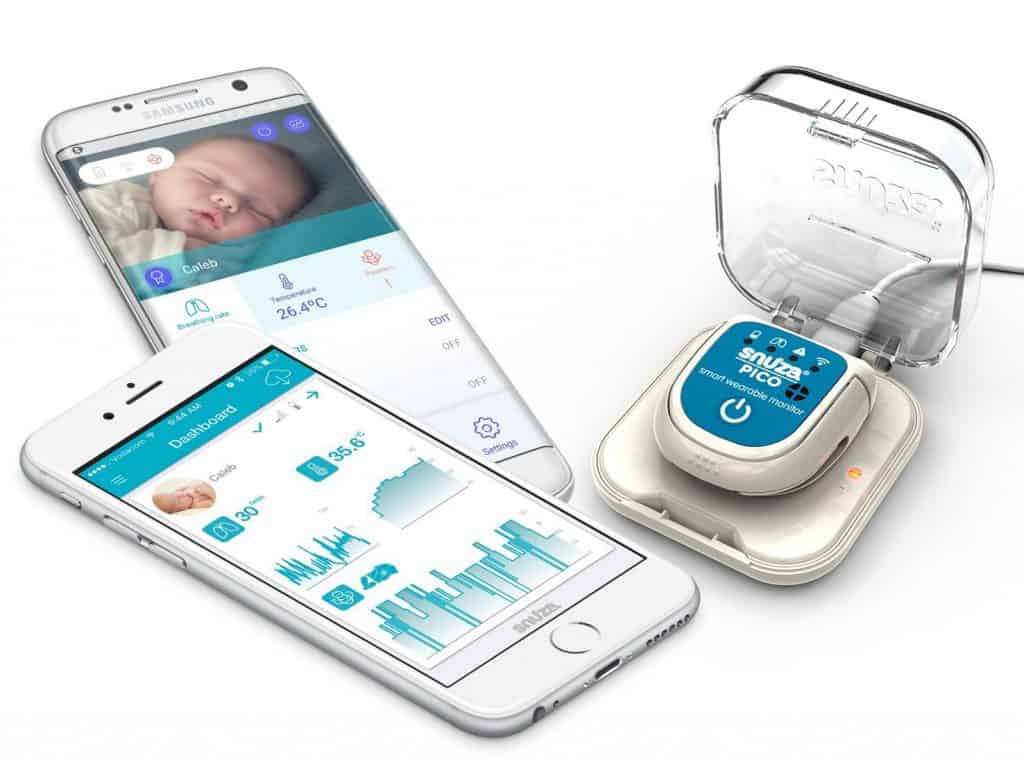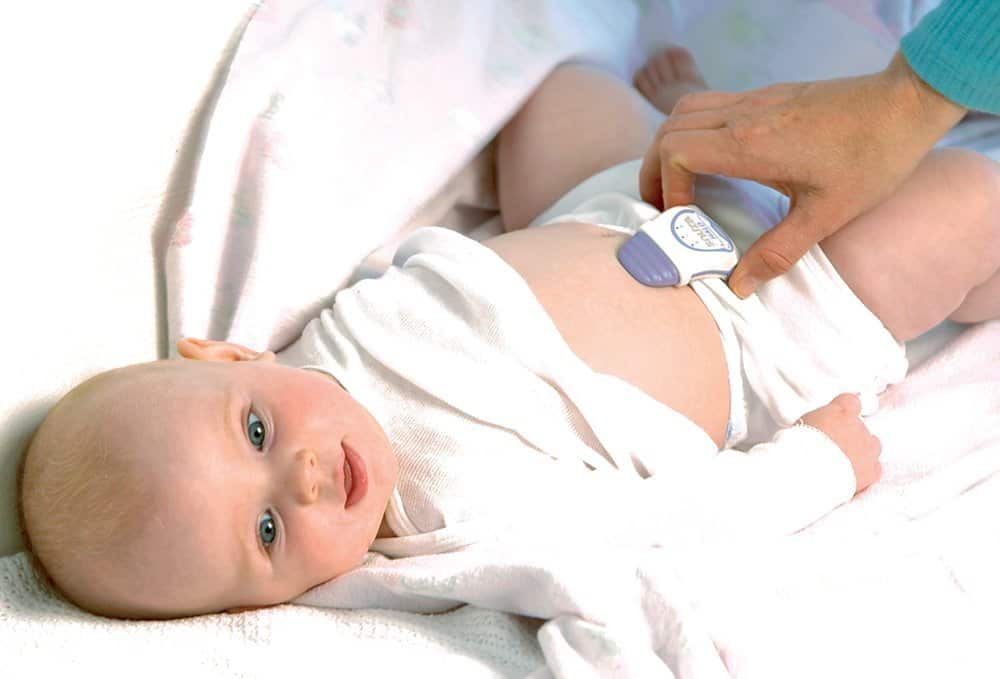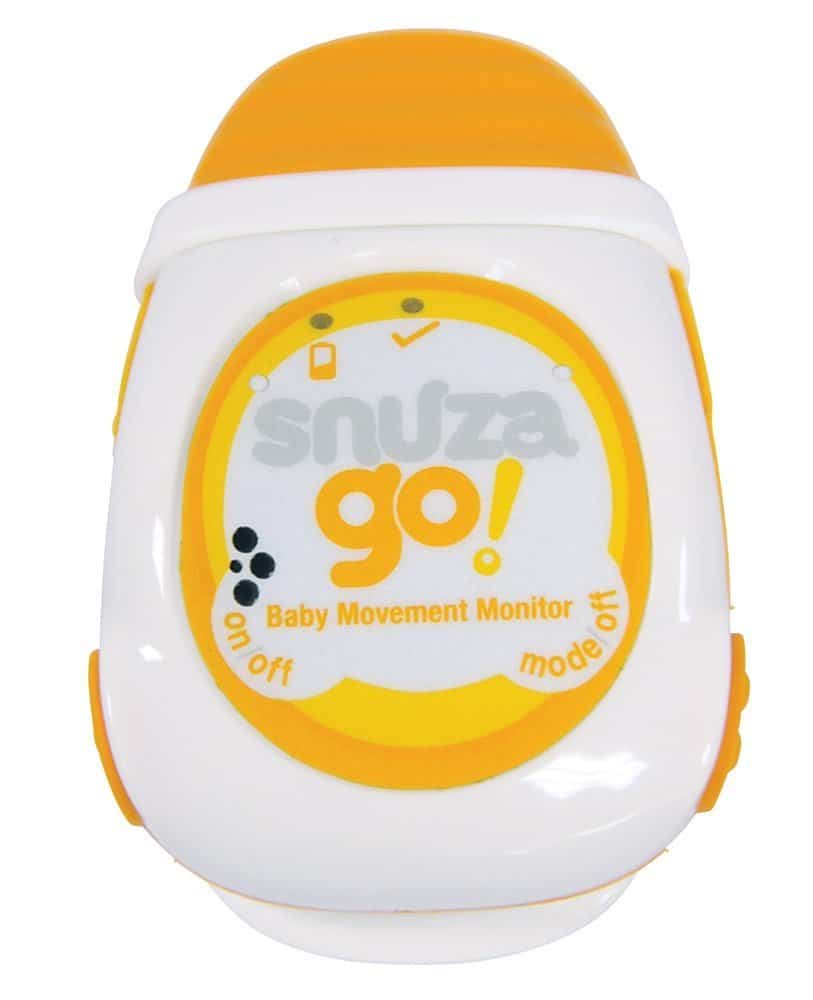
Smart Baby Monitor Brand Review: Snuza. South Africa-based Snuza is a bio-sensory technology company who have created smart monitor technology to keep an eye on baby’s physical movement. Unlike similar smart monitors that go under a crib mattress, the Snuza is a gadget that attaches to a diaper, with a rubber tip that comes in contact with baby’s stomach.
The Snuza comes in three different models: the Pico ($123 to $150; pictured above), the HeroSE ($105 to $120) and the Go ($84 to $109). How do they work? All three of them are similar.
How do they work? If the HeroSE doesn’t detect movement for 15 seconds, the unit vibrates to wake up baby. If another five seconds goes by without movement, an audible alarm (80 decibels) goes off to alert a parent. Also: the HeroSE will sound an alert if “baby’s movement are weak or fall to less than eight movements per minute.” The Snuza has a replaceable battery that lasts about a year.
The Pico is smaller than the HeroSE, but works almost exactly the same way with a few added features: a non-contact thermometer to measure skin temperature as well as an accelerometer to warn if baby rolls over or sits up. Those extras require more battery usage, so the Pico will have a rechargeable battery that lasts for about two weeks (40 hours).
The Go works similarly to the HeroSE, but without the vibrations to wake up baby. Instead it goes straight to alarm mode after 20 seconds ( you can set it to alarm at 15 or 18 seconds if you prefer). All three monitors are cordless.
If you choose the Pico monitor, you can check all those parameters on a smart phone, thanks to the Pico’s bluetooth stream to a smart device (iOs and Android apps are available).
The Pico is the most expensive at up to $150 and comes with optional monthly subscriptions ($10 a month) to track full histories and graphs of Pico’s measurements.
So what do parents think about Snuza? They love it—”piece of mind” is the reason Snuza’s fans think it is worth the $120 price. Yes, it does have to be positioned correctly on the diaper . . . and if you don’t, there could be false alarms.
In fact, the false alarms were the biggest criticism we heard from critics of the Snuza. Active babies can trigger the alarm by simply shifting from side to side. Some parents who use cloth diapers said they had a tough time getting the Snuza to fit correctly.
Quality control seems to be an issue for Snuza, as more than a few parents report they got a defective unit. Then the company’s slow and indifferent customer service compounded the issue—unreturned voice mails, slow email response, etc.
Battery woes are another negative for the Snuza monitors, which use a funky batteries not sold in stores. Some Snuzas ship with dead batteries, say readers. Others say their Snuza’s worked fine for a few months and then malfunctioned. A few folks said replacing the battery on a Snuza rendered it unusable.
Yes, the company offers a one-year warranty . . . but you have to ship back the defective unit (at your expense) and then wait for two weeks while the company tests it. After that time, Snuza will send you a replacement or your old unit back if they decide nothing is wrong. Even if the product is defective, you still pay for the return shipping. That’s not the way to handle warranty issues.
Bottom line: there is no scientific proof monitors like the Snuza prevent SIDS. While we know the majority of parents who’ve purchased Snuza say they loved it for the piece of mind, it is not a device we can recommend. The false alarm rate—and the anxiety this can induce in parents—make it not worth the money and effort. Rating: Not Recommended.



 We obsess over gear for families . . . so you don't have to. Baby Bargains has one mission: help you find the best gear for your family and home with unbiased reviews by experts with 20 years of experience. At prices that don't break the bank. When you purchase a product from links on this site, we make a small affiliate commission. Learn more
We obsess over gear for families . . . so you don't have to. Baby Bargains has one mission: help you find the best gear for your family and home with unbiased reviews by experts with 20 years of experience. At prices that don't break the bank. When you purchase a product from links on this site, we make a small affiliate commission. Learn more 
